Categories: Novice electricians, Energy saving
Number of views: 3160
Comments on the article: 0
What is the coefficient of performance (COP)
The efficiency (abbreviated - Efficiency) of an electrical installation shows what proportion of active electrical energy Q, irrevocably consumed by this installation, is accounted for by the useful work A performed by this installation for its intended purpose (if we are talking about a converter or a consumer), or what proportion to the installation of mechanical energy (or energy of a different form, for example, chemical or light) is converted into useful energy (work) in it.
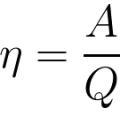
Thus, the efficiency is a dimensionless quantity, the value of which is always less than unity, and can be written in the form of a decimal fraction, or in the form of a number (number of percent) - from 0% to 100%.
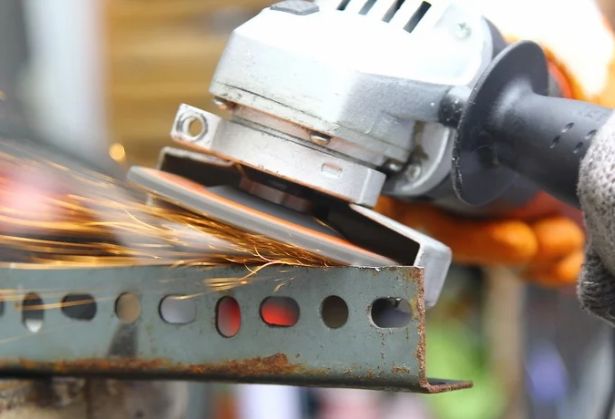
Heaters
Electric heaters, in which the energy of electric current is converted directly to heat, have the highest efficiency (close to 100%). In practice, this is the so-called Joule heat, which is released according to the Joule-Lenz law on a heating element (for example, on a nichrome spiral) when an electric current passes through it, and this is useful work in this case.
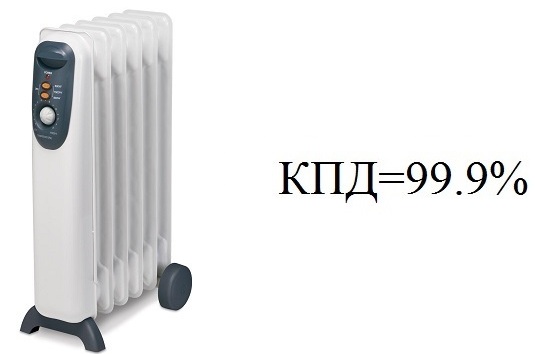
An example of such a device is an oil cooler. If, say, in an electric motor or in a transformer, heating of the windings is a net loss, then heating in an oil cooler is useful work, there are no other (unprofitable) losses.
See this topic:
Device and principle of operation of an electric convector
Which air heater is better: PETN or ceramic
Induction motors

For asynchronous electric motors, the efficiency usually does not exceed 80-90%. The useful work here is the mechanical work performed by the motor shaft.
An alternating current is supplied to the motor from the network, this current passing through the stator winding generates an alternating magnetic field in the magnetic circuit (stator), which, acting on the rotor, rotates it. In this case, active power losses inevitably occur in the winding wire (Joule heat) and in the magnetic circuit (eddy currents heating the stator and rotor metal).
For this reason, the casing of the engine running under load is always heated. To remove heat, a fan impeller is installed on the rotor of the engine, and radiator fins are made on the outside for better cooling - to remove heat loss and maintain engine performance at an acceptable level.
The motor efficiency can be found on the nameplate (nameplate). Read more about this here: Characteristics of induction motors
Electric motors with the highest efficiency: Modern synchronous jet motors
Information about electric motors in household appliances: Household engines and their use
Light-emitting diode
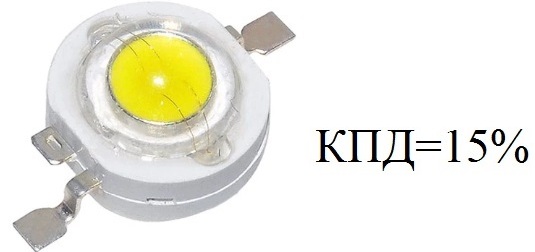
In LED lighting, the useful work is to produce visible light. The efficiency of such LEDs today reaches 35%, which means that 65% of the electrical energy supplied to it is still lost in the form of heat. Therefore, these LEDs always have a metal substrate as part of the housing, with which they are tightly attached to the radiator, or simply massive leads to provide the necessary heat dissipation.
More about LEDs:
How the LEDs are arranged and work
Modern LEDs - what to look for
Solar battery
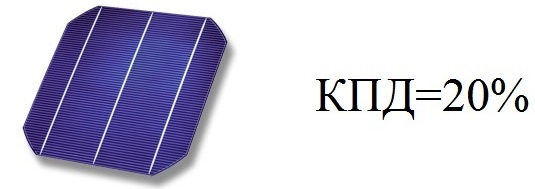
Consider the case of generating electricity from sunlight using a silicon-based solar cell. The efficiency of a conventional single-crystal solar battery is in the region from 9 to 24%. This means that depending on the number of photons incident on the solar cell, its efficiency will be more or less.
One way or another, not all photons incident on an element lead to the generation of an electric current, but only those that have the most appropriate wavelength for this element. Other photons simply reflect, lead to heat, or even interfere with current generation. Scientists from many countries around the world are constantly conducting research in the search for technology to create more efficient solar cells.
See more about this here:
How are solar panels arranged and work?
Highest Efficiency Solar Panels
5 unusual solar panels of the future
Current source
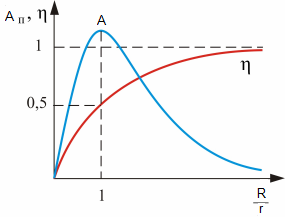
The efficiency of a real current source strongly depends on the load resistance, or rather, on the ratio between the load resistance R and the internal resistance of the current source r.
for instance for alkaline battery, feeding a small heater, we can say that the chemical energy is supplied, is converted into heat. When the load resistance is equal to the internal resistance of the current source, the efficiency is 50%, and under these conditions, the source gives the maximum possible power, half of which, however, is dissipated in the source itself.
And the greater the load resistance, the higher the efficiency of the source, since in this case more power falls on the load resistance, and less is dissipated in the source itself. This means that the best efficiency is obtained when the source is almost empty, that is, when the load resistance is much greater than its internal resistance.
See also about the efficiency of various bulbs: Types of lamps for home lighting - which are better and what is the difference
See also at i.electricianexp.com
:
